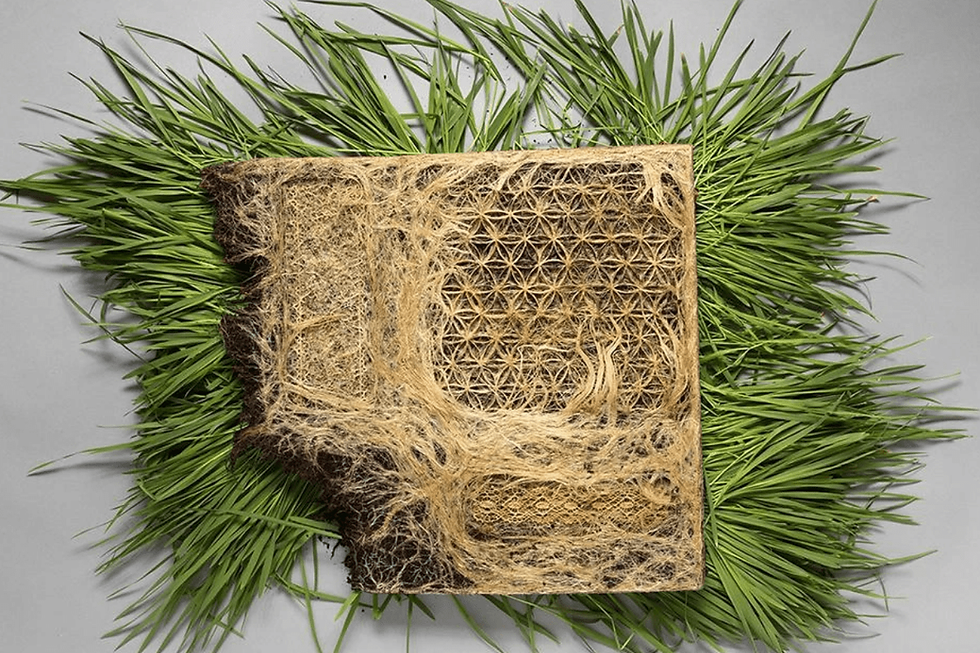FASHIONED FROM NATURE: THE SECRET LIFE OF ROOTS
- Shwa Laytart
- Apr 18, 2019
- 3 min read
SHWA LAYTART - APRIL 18, 2019
“I look at the root system as though it were made of yarn.” - Diana Scherer
Being in the fashion industry for twelve years, working with artisans in Peru who spin yarns, hand knit and finish garments with intricate patterns and styles, I know how much time and energy it takes to make each artistic piece of fashion we wear. Based in Amsterdam, German born artist Diana Scherer has found a way to let nature do the details.
As a photographer, in 2012 Scherer first started with root bound images for a project she called Nurture Studies. She would have flowers fill a vase or as she calls it the “plant’s corset” with a full root system. She would then remove the “corset” to reveal the complex and beautiful underground system of roots that have retained the shape "as an evocation of the now absent vase."

Fascinated by the vast differences in growth patterns, colors, textures, and thicknesses the root reminded Scherer of yarn which got her wondering if she could weave roots underground into fabric.
This sprouted her new art project, Interwoven. A self growing bio-fabricated material that can be used as clothing. Scherer uses her one template designs for the root fashion fabric. She also likes to leave an edge of free flowing roots to demonstrate how the root would grow normally. “I look at the root system as though it were made of yarn. For example, the roots of grass look like silk to me, and the roots of a daisy remind me of wool. In this project, the natural network of the root system turns into an artificial textile."
Each piece of root fabric comes out different each time with its own unique details.
“The roots that I domesticate, they have to do what I tell them.”
A communication with the root system that Scherer describes as an “exercise in root system domestication”.

She prefers to train her roots into geometric patterns found in nature, like honeycomb structures, or foliate designs reminiscent of Middle Eastern arabesques.
“In my work I explore the relationship man has with his natural environment and his desire to control nature. For the past few years my fascination has mainly been focused on the dynamics of below ground plant parts.
I’ve been captivated by the root system, with its hidden, underground processes; it is considered to be the brain of the plant by plant neurobiologists.”
Scherer continues, “Charles Darwin was the first to watch the behavior of plant roots. In his book The Power of Movements of Plants, he describes how roots do not passively grow down, but move and observe.

A root navigates, knows what’s up and down, observes gravity and localizes moisture and chemicals. Darwin discovered that plants are a lot more intelligent than everybody thought.
For contemporary botanists, this buried matter is still a wondrous land. There is a global investigation to discover this hidden world. I also want to explore it and apply the ‘intelligence’ of plants in my work.”
Since late 2014 Scherer has been working with biologists and ecologists at Radboud University in Nijmegen, in The Netherlands, figuring out which types of roots grow fast and train easily like oats, grasses, corn and wheats as well as which ones grow slowly and with less structural conviction like daisies. So will we see the use of cannabis and hemp in the future? Only time will tell.
In 2016, Scherer won the New Material Award from Het Nieuwe Instituut for the arts, in Rotterdam, for her textile-like pieces. Her fashion designs were featured at the Fashioned from Nature Exhibition at the V&A Museum in London in 2018.
“I look at the root system as though it were made of yarn.” - Diana Scherer
Website
Images provided by Diana Scherer, courtesy of V+A Museum


Comments